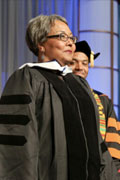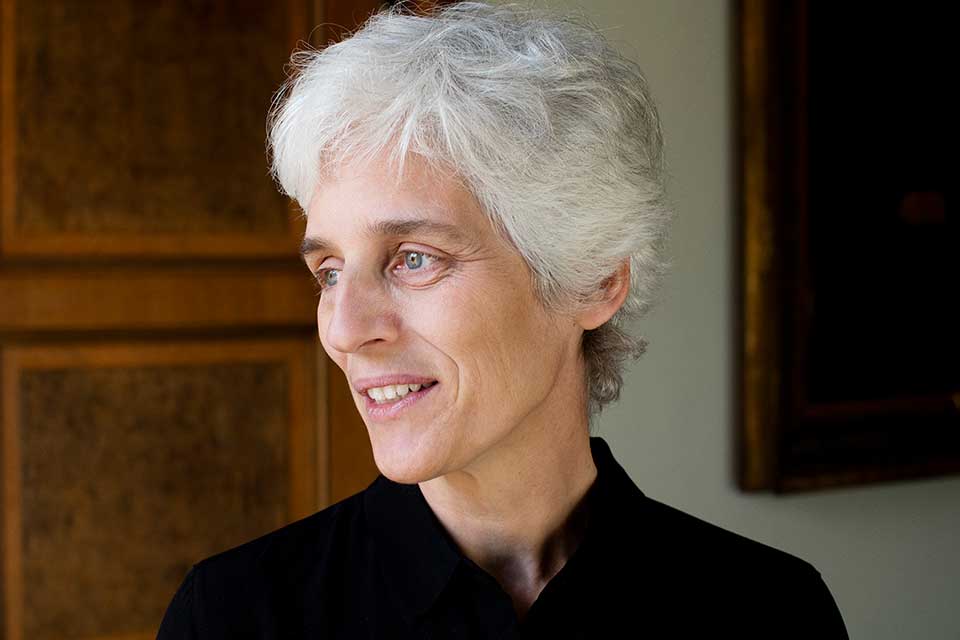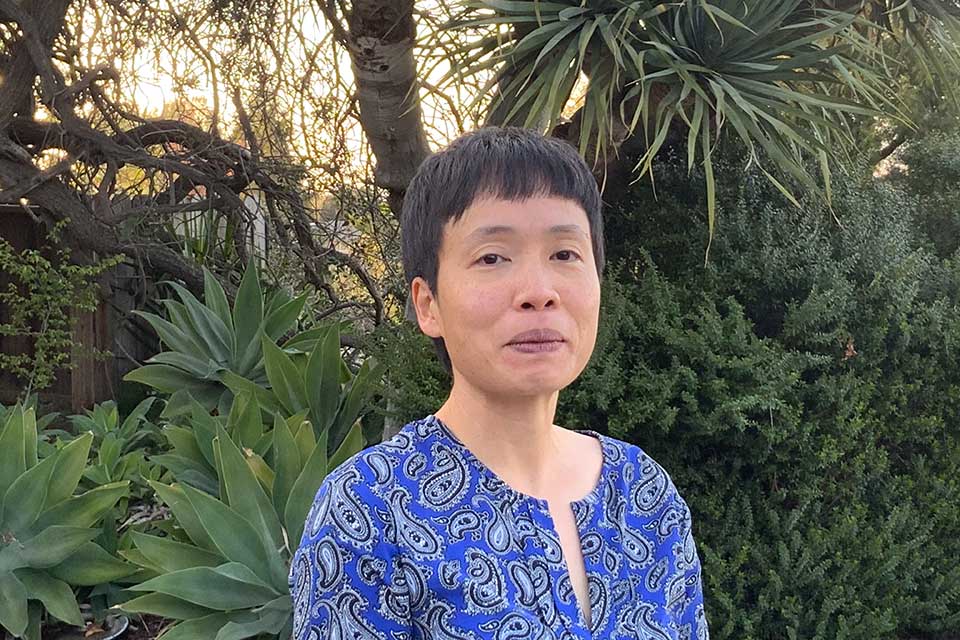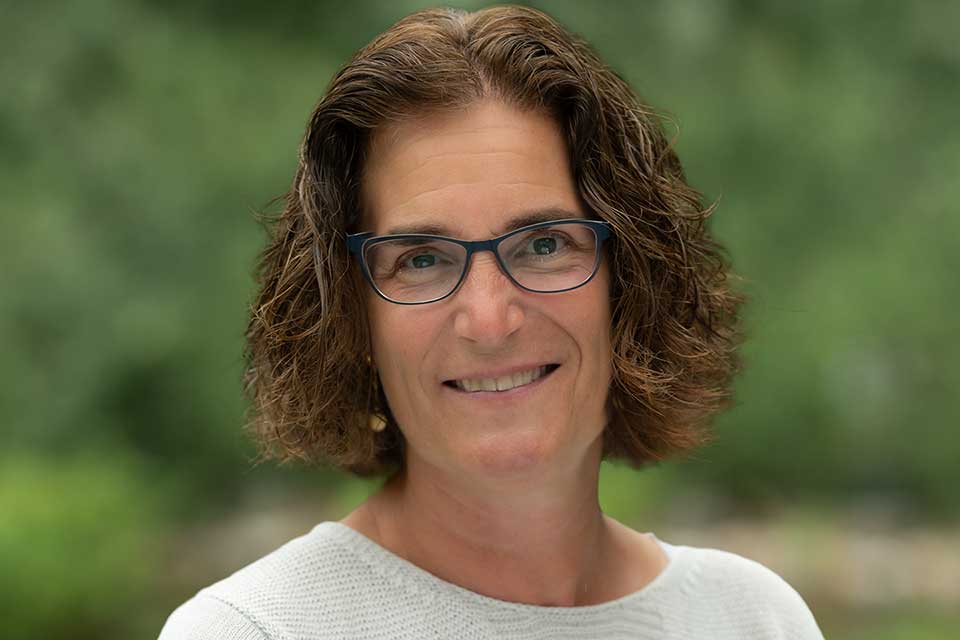Brandeis Alumni, Family and Friends
Chari Smith, PhD’89 Is Bringing Research Discoveries to the Real World
This Women’s History Month, the Brandeis Alumni Association invited perspectives from several alumnae who are inspiring the next generation of scientists.
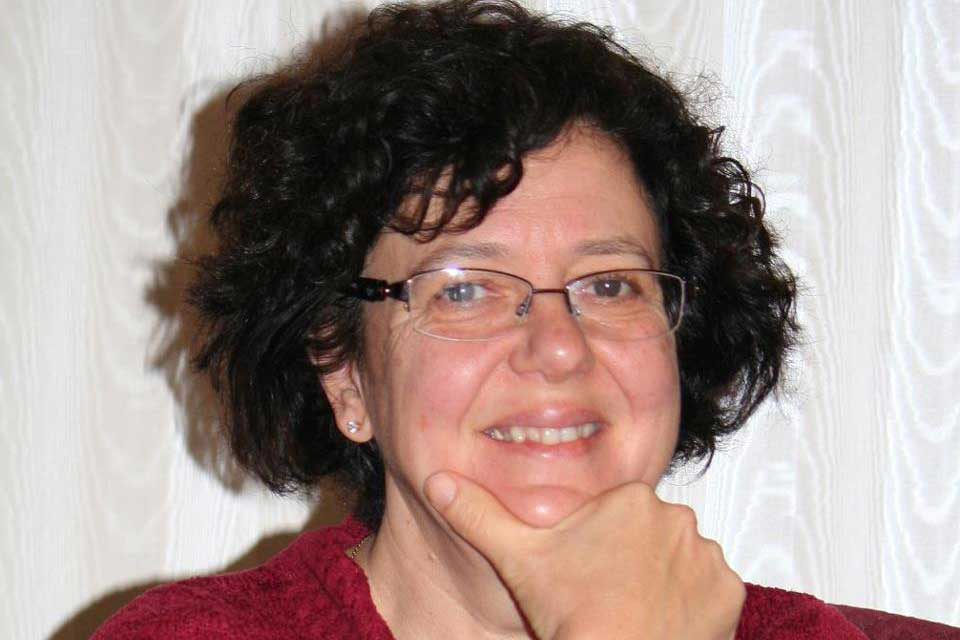
Chari Smith, PhD’89, is Drug Discovery Executive in Residence in the Department of Molecular Biology at Princeton University, where she serves as a consultant to university researchers seeking entrepreneurial opportunities, and to the dean of research on creating partnerships between the university and the biotech industry.
Founder and principal consultant for PharmTeam Consulting, Smith is an accomplished biochemist, with more than 28 years of experience in the pharmaceutical and biotech industries. Among other roles, she was a leader in biology research and industry-academic collaborations for GlaxoSmithKline in Research Triangle Park, North Carolina, for many years.
Smith was long involved with the North Carolina GlaxoSmithKline Foundation Women in Science Scholars Program, mentoring outstanding young women science majors from colleges and universities in that state.
She was invited by the Brandeis Alumni Association to reflect on her career in STEM and on the part her Brandeis experience played in shaping her professional path.
I am a consultant working at the interface between academia and biotech to translate basic science discoveries into viable therapeutic programs. My focus is infectious disease and metabolic disease, but I have worked in a wide range of areas including cystic fibrosis, genetic musculoskeletal diseases, and repair of lymphatic tissue after breast cancer therapy.
I enjoy the steep learning curve that happens when you enter a new area and have the opportunity to take in an enormous amount of information in a short period of time. Occasionally there are projects that rise above the “this is interesting and engaging” level to “this looks like something real that can, with the right focus and attention, truly change lives and alleviate suffering.” Those moments are rare in the therapeutics world. When they happen, even after 30 years, I still get a thrilled feeling in the pit of my stomach when I realize I have a chance to contribute to that outcome.
I was always a nerdy kid who loved learning and reading. My father was an accountant and math was always part of our lives. I can remember learning to play with the adding machine on his desk and thinking it was magical. I grew up in an environment that fostered an interest in the natural world and provided tools that fanned my natural curiosity. I wouldn’t say that anyone particularly thought I would be a scientist when I grew up. I was born in 1960. Role models of women scientists were thin on the ground. I chose a STEM career in college after I landed a work-study job with Dr. Miriam Salpeter at Cornell. Her lab was focused on understanding the pathophysiology of muscular dystrophy and neuromuscular junctions. Once I got into a lab, I never wanted to leave. So I didn’t.
Brandeis was a good place for me for many reasons, and I still think back on the many learnings and experiences I had in my time there that were transformational for me. We had small classes, exceptional teachers, and research advisors who truly wanted us to learn to think. Drs. Abeles and Jencks taught our biochemistry course. I can still close my eyes and see the chalkboard with their handwritten graphs of burst kinetics, examples of covalent intermediates, and hear their explanations of how proteins use binding energy to drive catalysis. That fundamental knowledge still buttresses my work on a daily basis.
I knew back then at some level that there were not very many women biochemists in the world. And certainly, there were very few on the faculty at Brandeis when I arrived. However, unlike other schools I visited, Brandeis had women graduate students in the program. Not just two or three. A critical mass. I never felt alone or isolated as a woman there. In fact, there were so many of us, we created an informal women’s network group. At least once a month we met for GNO, or “Girls’ Night Out,” where we had drinks, talked about our career aspirations, our experiences in graduate school or as postdocs, gave each other advice and support, and celebrated our small victories together. We shared books written by women scientists and even hosted a Women in Science event at Brandeis, which was, I think, a first for the university at the time.
I took the fact that I was treated as an equal to the men for granted at Brandeis. Later, when I moved on to do a postdoc and then to my first job, I realized that the ability to take gender equality for granted was not an experience that every woman had at every institution. My experience of Brandeis was one of an ethical institution. Science education was what mattered.
My thesis advisor, Dr. Chris Miller, was a passionate scientist, whose amazement at every movement of an electron was infectious. I remember one particular day I was trying to chemically label a protein and prove it was still functional. I finally succeeded, using a somewhat unorthodox methodology. I shared the data with him. He was so excited he literally danced up and down the hallway. It was impossible not to love science when you were around Chris.
Science changes, sometimes at warp speed. Things happen that look interesting to you that you would never have imagined were possible when you started your training. With a strong STEM foundation, you can move toward opportunities that attract you that you grew up believing were science fiction. Find an area of science that makes you want to pop out of bed every day and run to your bench or desk to see what happened overnight. When you are doing that, you know you are on the right path.





